Jute rugs and carpet are not widely used, but they are a sustainable option for your home and office. Jute matting is used for backing on some carpets and linoleum. Jute area rugs and carpet can lend a certain look to your home, while custom made jute rugs add a distinct touch of class. Jute flooring is more delicate or fragile than other natural fiber rugs and carpets, but it may be the right choice for you.
If you have a roll of jute sitting around, then it might be worth a second look. This isn’t just a great tool for helping out the garden or a package, but it’s also great for making jute rugs, an eco-friendly and attractive flooring option for your home or office! If you’re looking to make your own jute rugs, most craft stores or fabric stores sell jute in rolls like this one available on Amazon.

What is Jute Exactly
The use of jute fiber can be traced back to ancient Bengali culture. It’s a soft and shiny fiber that looks a lot like a hemp plant when it is growing. Jute began to be exported to Europe in the 19th and early 20th Centuries. Actually one of the cheapest natural materials, it is only second to cotton in terms of current uses.
Jute grows best in warm, humid climates, like in Bangladesh and India. Advantages of using jute as a fiber include:
Biodegradability:
Like other natural fibers such as hemp, bamboo or cotton, jute will break down over time. Because of their ability to break down, jute rugs and jute flooring options are a great choice in a society that is increasingly putting emphasis on making eco-friendly consumer choices. While the ability to break down may sound like a downside, think of it this way: over time, items that we have will either disintegrate or need to be thrown away. Instead of filling landfills, jute will break down in the soil and replenish the natural vitamins and nutrients of the earth.
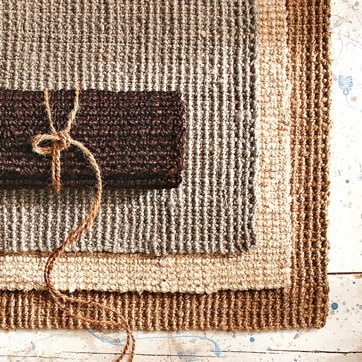
Fire-Resistant
While jute is not completely fire-proof, it is a fiber that cannot be set ablaze. As with many other natural materials, the inherent structure and oils found in jute make it resistant to fire damage. Fire can light it, but it won’t stay lit for long. Jute matting and a jute carpet in homes may help to stop the spread of fires that start accidentally.
Sustainable:
Jute is actually a vegetable fiber (and yes, it is edible!), so it grows fairly quickly when planted and can be harvested after a comparatively short period of time, making it a highly renewable fiber source. And, as with many natural fibers, jute is easy to grow and re-grow, making it a sustainable resource. It doesn’t take up nearly as much space or energy to grow as a tree would, plus it grows more rapidly, allowing for the growth cycle to replenish itself, rather than necessitate planting more trees.
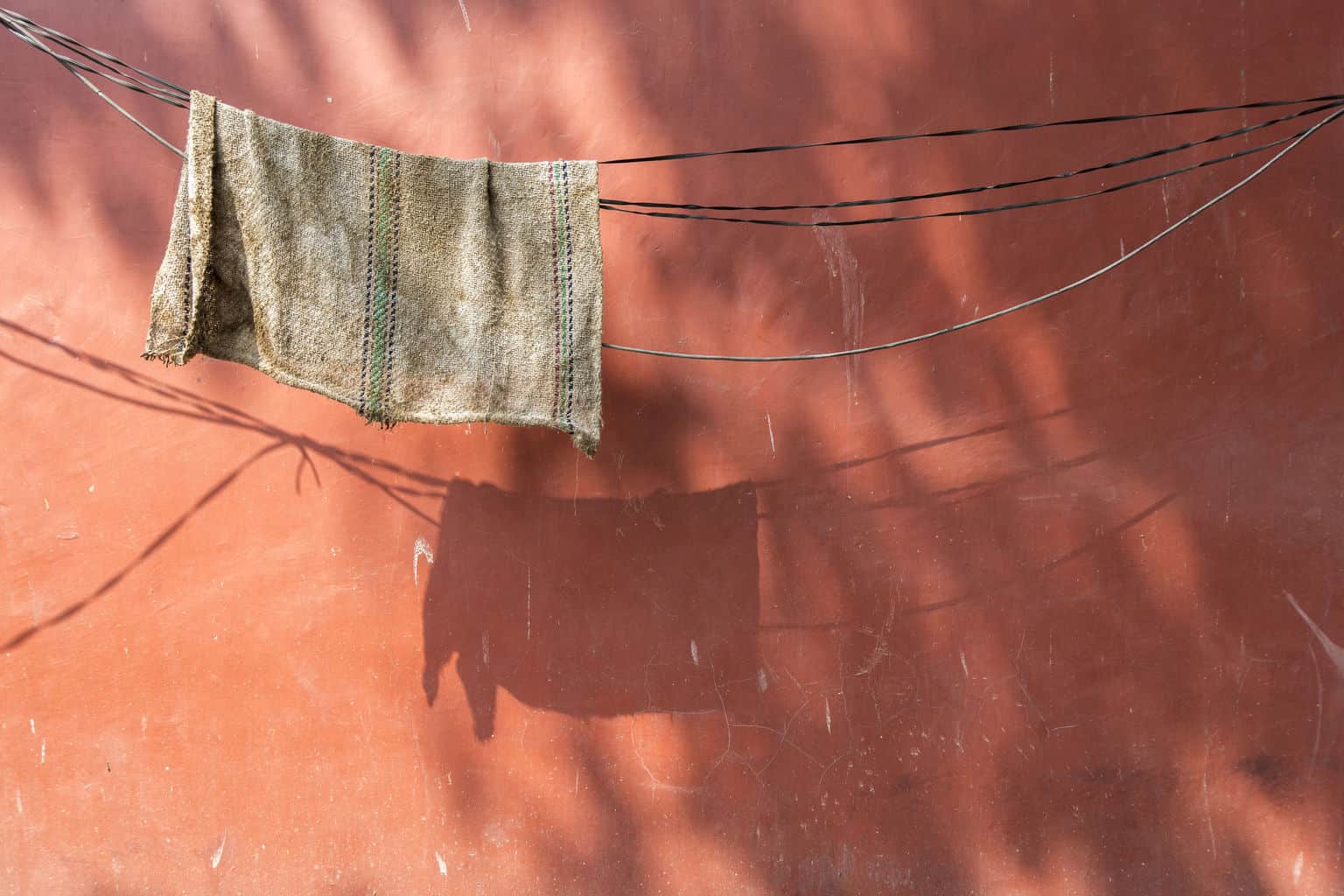
Durable:
Jute is an extremely strong natural fiber that can hold up to lots of wear and use. However, high humidity or water can break down this strength, so you should not expose any jute rugs to highly damp conditions and you should not shampoo jute. The overall strength of jute is impressive and makes for excellent packaging material and construction material. You can also create durable clothing and other items without fear of breakage. Henry Ford actually tested the strength of jute when he was working on the trunk of a car. Instead of the glass composition, he incorporated part of the jute plant into the design. This made for a lighter car part without sacrificing any of the strength.
Using Jute Rugs In the Home
While you may now be convinced on the properties of using jute rugs, you still need to get an idea of how to actually use jute rugs in the home. Read on for suggestions on how to use jute in a home or office.
Design:
Jute rugs have a casual, timeless look to them that can be complimentary in many design styles. As the color of a natural jute rug is very neutral, you can pair it with an all-white décor for an upscale, classy appearance. You could, instead, go for a more funky look by layering different texture rugs, adding other textiles to the room, and including bright colors in your decoration or wall color. If you are looking for more color in the rugs themselves, jute can be woven with additional fabrics (such as cotton) that are pre-dyed to add color to the rugs. Jute can fit in easily with any of these designs and, since your jute rugs will last for a very long time, you can easily update or change styles without having to replace your rugs.
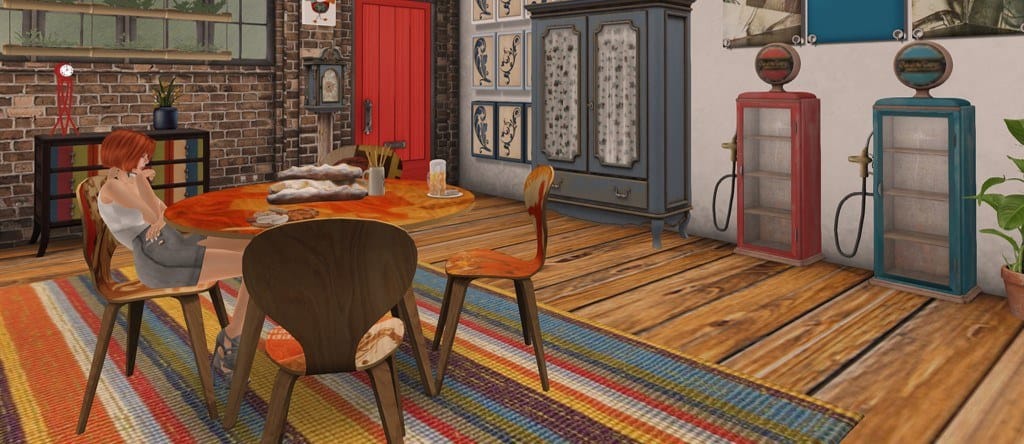
Cost:
The price of jute rugs also makes them very appealing. For a high-quality, durable and eco-friendly option, you cannot beat the price of jute rugs! Especially since you will not need to replace these rugs for years and years, even those in the most traffic-heavy areas of your home or office. nuLOOM is one brand that sells natural, chunky jute rugs on Amazon for a very high end look at a really reasonable price-point.
Texture:
The feel of jute rugs is very unique and appealing in the home to many. I’ve heard it described as a “massage for the feet.” The bumpy texture of jute can be a bit rough at first, but will soften quickly with a bit of use. If you are still afraid you will find the texture unappealing, there are jute rugs that are mixed with other natural fibers, such as chenille or cotton, designed to make the rugs feel softer underfoot.

Maintenance:
In addition to the texture of jute being very appealing, this makes it incredibly easy and low maintenance to clean. Dirt, dust and hairs are trapped and hidden in the weave of the rugs, but are easily picked up by a quick vacuuming. The rugs can be vacuumed frequently without breaking down, as this fiber can stand up to some serious wear. Spills are easy to wipe up and stains and smells aren’t trapped in the fibers, due to the structure and natural oils in the fiber. Some do complain about little fibers that can be seen as they break off from the rug, but these are easy to sweep or vacuum, and the maintenance is comparable to other natural fiber rugs.
And my final suggestion for you if you choose to have jute rugs in your home is to be sure to use rug pads. Like any natural fiber rugs or, really, rugs in general, jute can be a little slick. Do use rug pads (I personally prefer the felt variety, like this rug pad available on Amazon) under jute to help keep them in place and prevent accidental falls! You don't have to worry, however, about jute scratching your floors, so the rug pads are truly just to prevent slippage and are not necessary to protect existing hardwood, linoleum, or vinyl floors.
Negatives of Jute Rugs and Floor Coverings
The problem that jute has as a fiber used to make rugs is that a clean jute rug is a happy jute rug, but those that get wet are unhappy. Moisture will rapidly deteriorate the strength of jute, as can acidic conditions. Jute flooring is best used where humidity is low because moisture is hard on it. So, it’s safe to say that outdoor jute rugs aren’t going to do much good for long. But a jute rug in a home or office in the southwestern part of the U.S., for example, would be a lovely addition to the space.
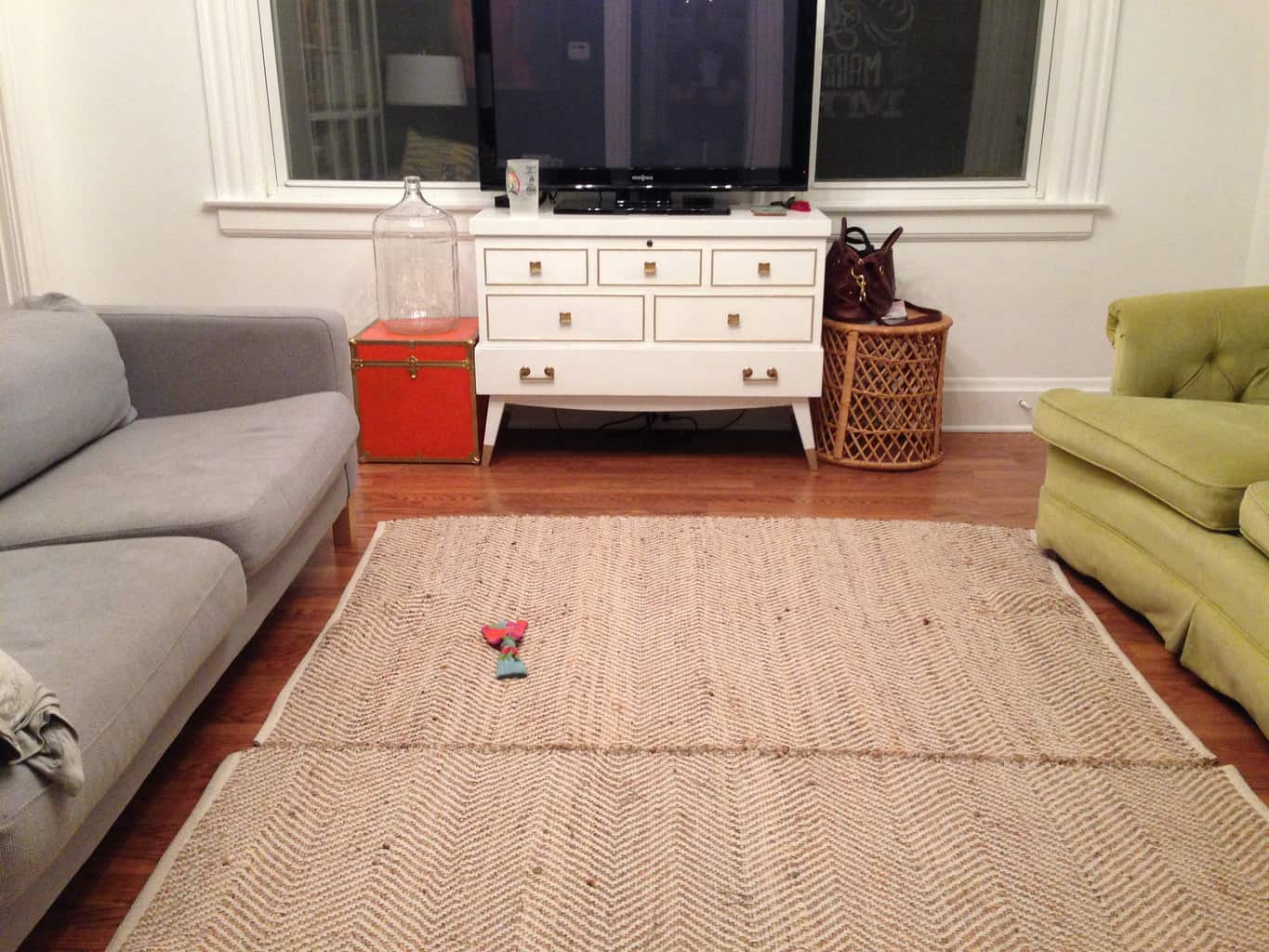
As jute fibers break down, little pieces of the fibers will break off and can look like dust or dirt. This is especially noticeable underneath the rug, but can also be a problem on especially dark flooring or even furniture. While it’s fairly simple to clean these fibers with a quick vacuuming or sweeping, this can be annoying if the rugs are kept in a room that is not a part of your regular cleaning routine. Generally, those who choose jute rugs for their homes find that the benefits far outweigh these negatives.
The Final Verdict On Jute Rugs In the Home
When it comes down to it, whether you choose to use jute rugs for your home will really come down to your style preference. Jute has a unique look and feel to it that will mean you will either love it or hate it, and you will know how you feel as soon as you try it out.
Popular Jute rugs on Amazon.com
If you love the look, consider getting a custom jute rug for your home. Jute rugs can be customized down to the weave as well as the size, and custom-made jute rugs will give you exactly the look you seek for your home or office. Jute matting and jute flooring are perfect example of sustainable household decorations. Not only are they beautiful in their weaves and strength, but there’s no need to worry about them cluttering a landfill years from now.

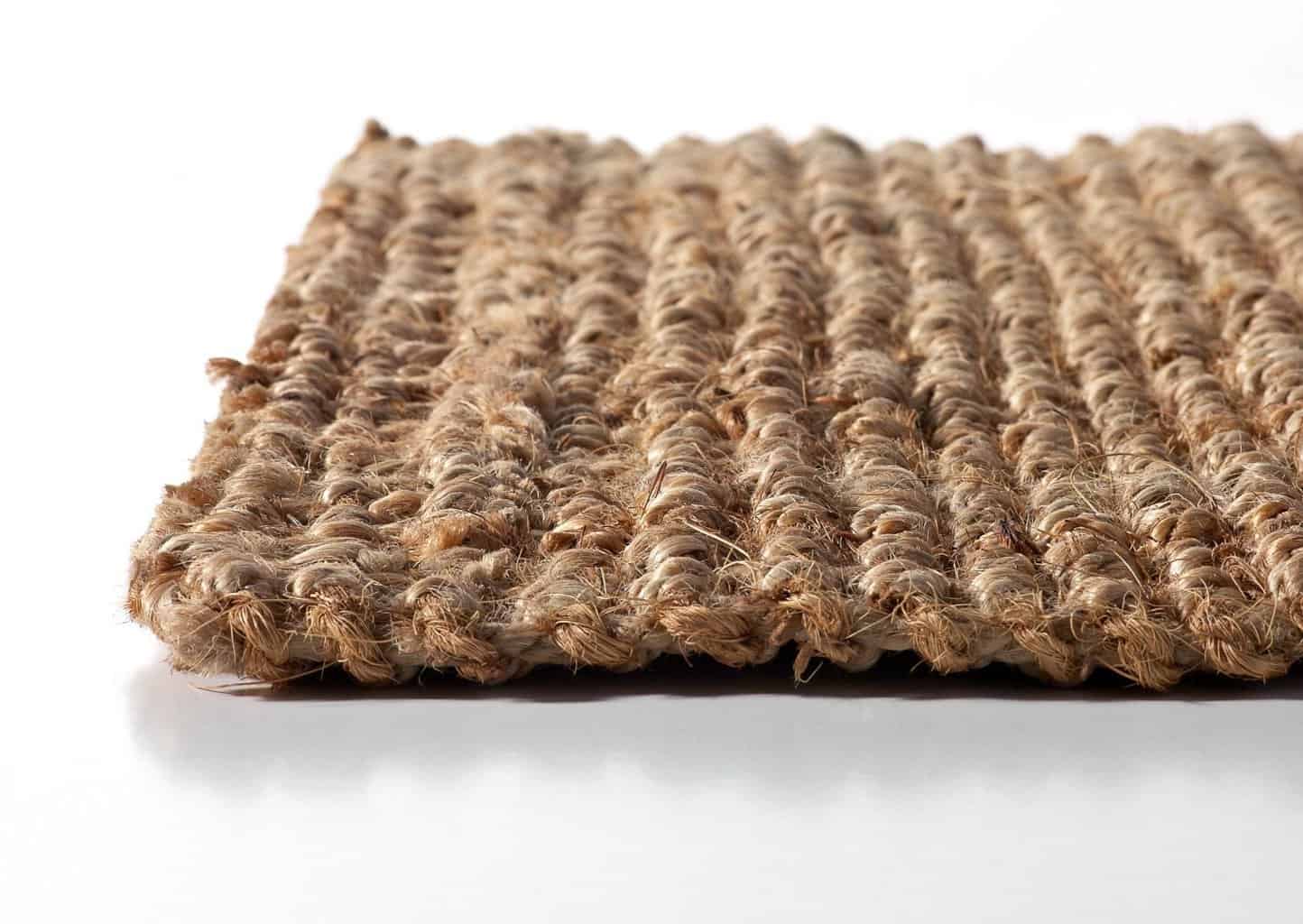
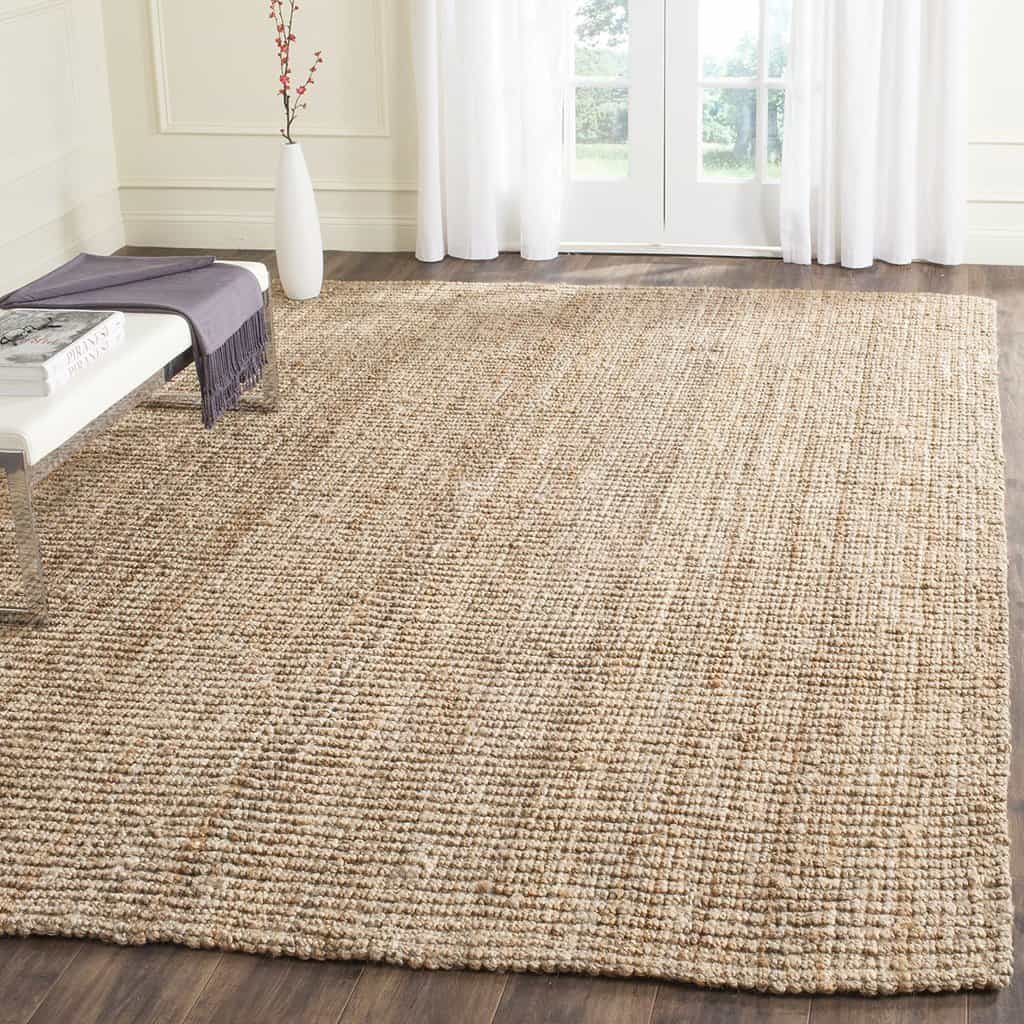
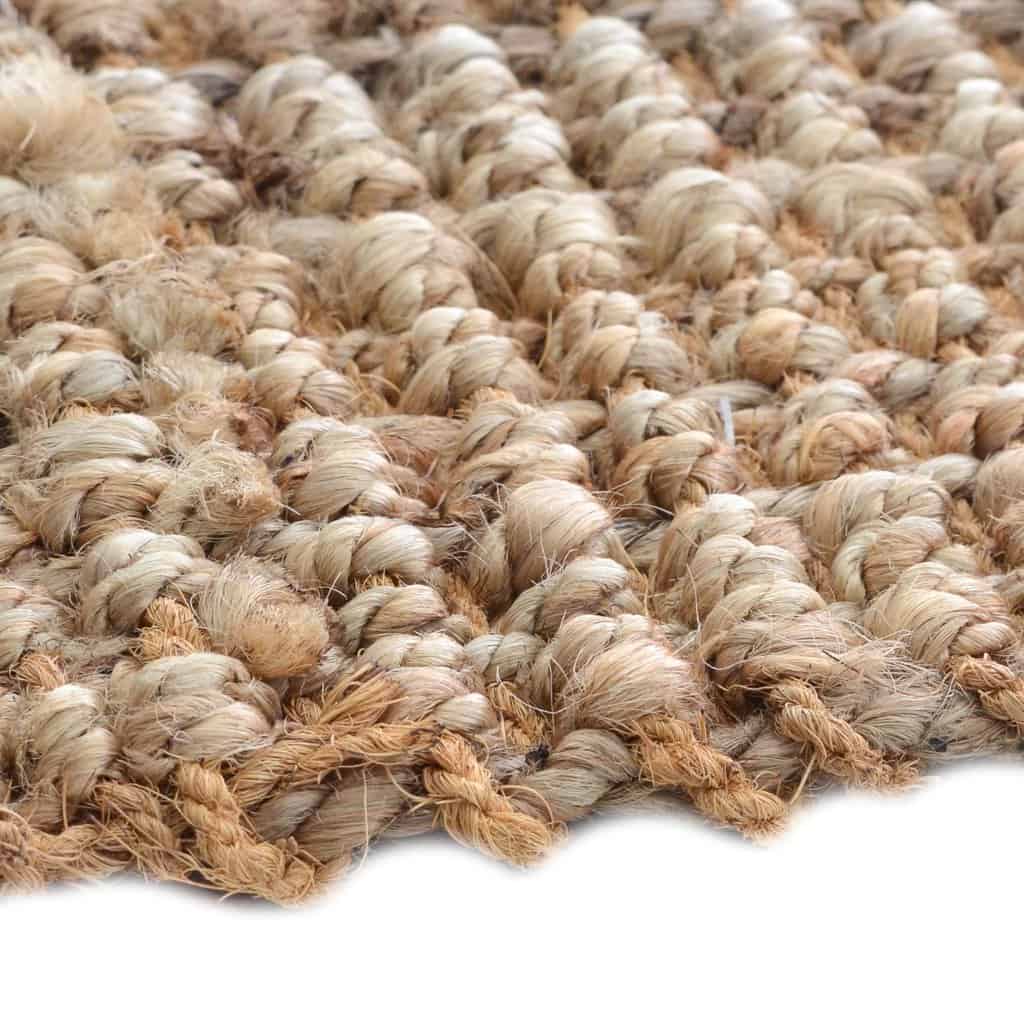
I don’t have much experience with jute rugs either and rely mainly on advice given at Natural Area Rugs. To read more, just click on the link, go to the bottom of the page and click on Care and Maintainence under the Learn More Heading.
I have a new thick jute rug that hurts your feet to walk on. Any suggestions?
Nope. Jute’s just like that. It might get a bit smoother over time, kinda has a break-in period. I think you’re going to find that your rug will always be a tad rough on your feet.
Do you think a jute rug would be good in an office to roll around on with an office chair? Thanks for the advice page!
Hi Jon,
I would always recommend one of those clear (plastic/rubber/acrylic – what ever they’re made out of!) mats over a carpet in the area where an office chair is going to be rolled around on. That’s going to create wear faster on any carpet.
I have a 9×12 jute rug and I am in the process of using painting stripes down it with a mixture of delta gel stain with acrylic paint. It dries fast and it has given it a great look. It has been time consuming but it will cover any stains and will be resistant to future I believe. I am using masking tape as it sticks well to the jute. So far it looks great and I have been getting complements. I am doing wide stripes with some narrow giving a modern look. But you can do border look.
I have a jute rug from Pottery Barn and it leaves this dirt-like debris all undernealth it. I’ve cleaned it up several times. Any suggestions on how to make this stop happening?
Hi Cindi,
I’m not sure what the problem stems from since I can’t see the dirt myself. My guess is that it’s dust/dirt that gets tracked onto the rug and eventually filters through it. If it’s the jute fibers, hopefully it’s just a temporary shedding problem until the rug gets broken in. Any idea who manufactured the rug?
It is definately fibers from the rug. It sheds like crazy. I have to swiffer every day to keep up. I have had the rug for over two years and still it’s a mess. I looked on the tag and all it says is made by Pottery Barn. Should I hang it outside and beat it?
Hi Cindi,
All I can say is “ugh”. I’m at a loss what to tell you and I’m pretty certain that Pottery Barn isn’t going to help out any since it’s been over two years since you bought the rug. I’ve never heard of anybody else having this sort of a problem. I guess beating it once in a while couldn’t hurt too much, though it might break the fibers down even more and create more shedding. Who knows? It sounds like it may have been of poor quality. The fibers shouldn’t be that brittle.
I have a problem of outdoor rugs disintegrating after a few months use. I’ve purchased them from Pottery Barn, Ballard Designs and Lowes. They are made of Olefin and are labeled for outdoor use. The warp threads seem to disintegrate into a sand like dust. Before long the cross-wise weft fibers come loose since there’s nothing holding them in place. I can’t find anything about Olefin or polypropylene disintegrating. I have used the rugs on a deck and screened porch. Any ideas on what’s going on? They’re made in China.
Hi Carla,
I haven’t a clue as to what is going on with these. Could it be that you have them on a surface that abrades the rug from underneath? What type of surface are these rugs covering? It would be my guess that they are simply inferior products. I’m guessing that they didn’t have any type of warranty, right? All I can suggest is saving receipts, price tags, etc. the next time so you can contact the manufacturer/store in hopes of getting a refund.
I also have a rug from Pottery Barn (+10 years old) and I never had the problem until the last year. It is like a beach underneath it and every day I have to clean under it. I just hope it isn’t harmful to my small children. Any ideas?
Hi Danielle,
After so many years, it may just be nearing the end of it’s lifespan – especially if it’s seen a lot of traffic over those years. Most conventional area rugs don’t stand up even that long when they get a lot of foot traffic.
It is possible that dirt is just working it’s way through to the bottom, does it look like dirt particles or does it look like the jute is disintegrating?
I have a jute rug that’s several years old except for large spots that look as if they are watermark stains. I tried to steam clean it but it didn’t help. Any suggestions on how to get it back to close to how it used to look?
Hi Mara,
You might try StainSolver – it would
be better than OxyClean because it’s got more bleaching action. I would suggest spot testing first to make sure it doesn’t bleach too much.
You might also want to check out this site – they have some very good carpet cleaning tips for rugs made from natural fibers – what they call contemporary rugs.
We just became new owners of a beautiful jute rug from Pier One Imports (it’s a secondhand rug about 4 years old) and we noticed the fiber dust on my husband’s shirt after he carried it. I have to say I also wondered about the “clean up” of the debris. We don’t plan on putting the rug in a high traffic area of the house so hopefully it won’t be too much of a problem.
I have a Jute rug purchased recently (5 x 6) that got drenched outside in Florida. Now it is all moldy and we can’t get the mold out. I am at wits end and am about to try power washing as a last alternative. Do you have any sugestions.
Thanks
Hi Duane, Mold – that’s a new one! I would suggest consulting a local professional to see if they have suggestions on possible ways to remove the mold.
I have the same disintegration problem that Danielle describes. I’ve had 2 Capel rugs (made in France)out of Olefin or polyester and they disintegrated between June and September – fine powder dust & string. I was told after the first one went that they needed a pad – I think to help drying out. I have mine under a table on a second story deck. It gets hot, and it does get wet when (if) it rains (I’m in Los Angeles). I’m posting this in case someone else has figured out what the solution is.